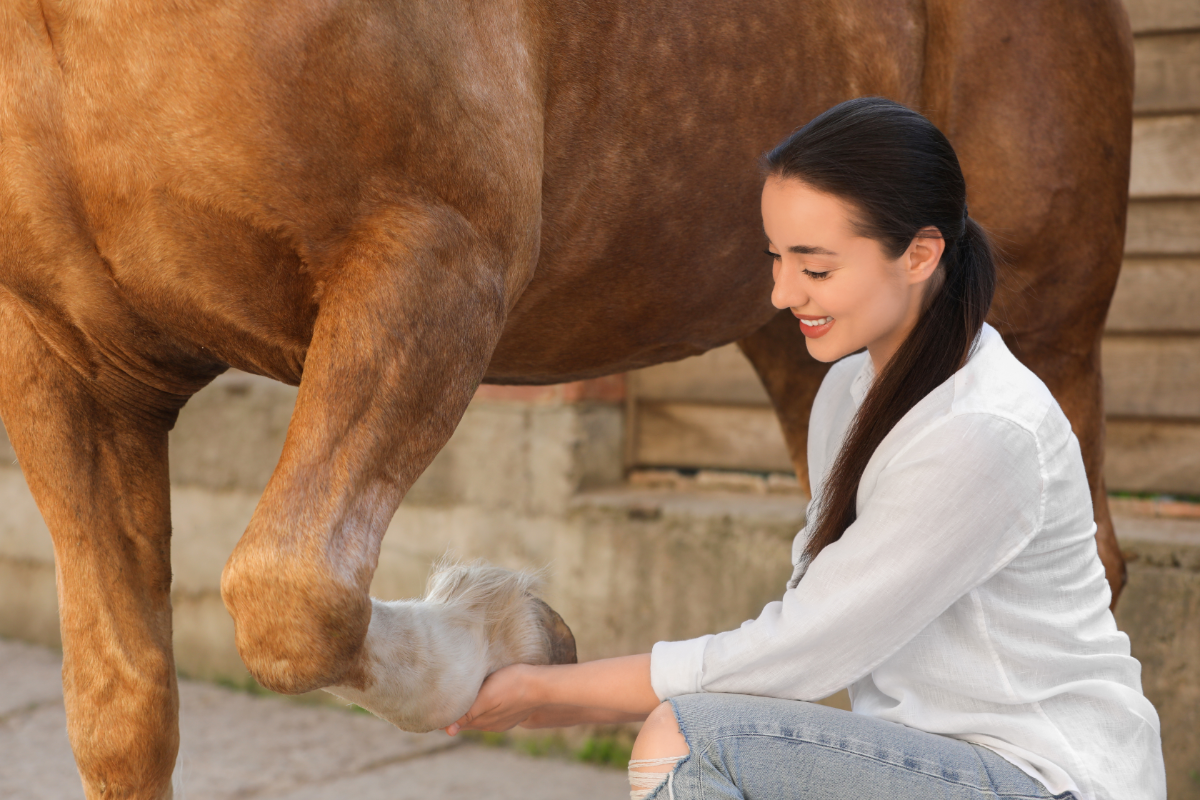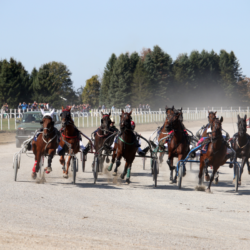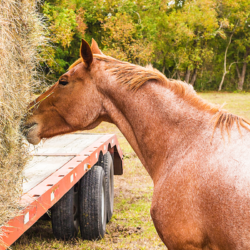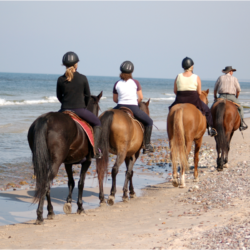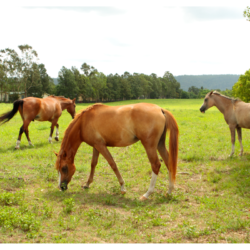Knurls, whether in joints or tendons, are a common problem in the equestrian world. These swellings, often painless and soft in consistency, can develop as a result of inflammation in the joints or tendons. This article aims to help you understand the causes of knurls, their symptoms, diagnoses and treatments available, as well as offering advice on how to prevent their occurrence. Let’s delve into the details of this condition together to better manage the well-being of our horses.
What is a knurl?
Knurls are a type of soft sore and result from abnormal dilatation of the synovial pockets around joints and tendons, caused by excessive production of synovial fluid. This reaction results from inflammation of the joint or tendon. In practical terms, swellings below the midpoint of the barrel are known as knurls, while those higher up are known as bladders.
There are many causes of this inflammation. Among the most common, over-intensive work that over-stresses the joints and tendons is a major risk factor. A floor that is too hard causes joint knots, while a floor that is too soft promotes tendon knots. Other causes include incorrect plumbing, unsuitable fittings that cause compensations, or the use of inappropriate equipment, such as bands that are too tight.
Trauma (knocks, blows) can also cause knurling. Certain pathologies such as synovitis, osteoarthritis and osteochondrosis also contribute to the appearance of knurls, as does tendonitis in the case of tendon knurls. Finally, a dietary imbalance or mineral and vitamin deficiencies can trigger chronic inflammation. Although often benign, knurls require appropriate treatment to prevent them becoming chronic.
How do you recognise knurls?
The symptoms of knurls vary according to their location and type. There are two types of knurls: articular and tendinous, each with its own distinct characteristics.
Joint knurls
Joint knurls are caused by inflammation of the joint resulting in an overproduction of synovial fluid. This fluid, produced by the synovial membrane, normally lubricates the joint to allow fluid movement of the bones. When it is produced in excess, it causes distension of the joint capsule, forming a knurl at the back of the fetlock, often without heat or pain. If the knurl persists, it can harden (fibrosis) and cause lameness.
Tendon knurls
Tendon knurls develop in the synovial sheath surrounding the tendons. In the event of inflammation, excessive production of synovial fluid causes the sheath to swell, creating a knurl along the tendon. Generally more flexible and elongated, it is less hard than the joint knurl. In some cases, knurls can affect both tendons and joints, complicating diagnosis.
These swellings, whether articular or tendinous, require veterinary attention to prevent them from becoming chronic and painful for the animal.
How is the condition diagnosed?
The diagnosis of knurls often requires veterinary intervention. Although a knurl may be visible to the naked eye, a precise diagnosis can identify the cause of the inflammation and determine the measures to be taken.
The vet will usually begin with a local examination to assess the consistency, location and warmth of the swelling. To refine the diagnosis, additional examinations, such as ultrasound or X-rays, are often recommended. These techniques allow detailed observation of the joints and tendons to determine the exact origin of the knurl and identify any other abnormalities.
Once the cause has been identified (incorrect alignment, underlying pathology, etc.), the vet can propose a suitable treatment plan and advise on preventive measures. Early diagnosis is essential to prevent the knurling becoming permanent or painful.
What treatments are available?
Treatments for knurls depend on their type and severity. If the knuckle is painless and does not interfere with the horse’s locomotion, treatment with medication is often not necessary. In this case, local treatments such as cold showers and the application of clay may suffice to reduce the inflammation.
In more advanced cases, the vet may recommend massaging with specific gels to promote blood circulation. When a pathology causes spurring, the vet will prescribe anti-inflammatories or specific treatments. Early treatment maximises the chances of recovery.
On the other hand, a knurl that has been present for a long time is more difficult to eliminate, as the tissues are often distended. In these cases, treatment is aimed primarily at reducing the size and inflammation, rather than eliminating the knurl altogether. Finally, movement remains an important ally in joint health, promoting circulation and the elimination of toxins.
What are the natural alternatives?
Certain natural methods can be useful in supporting the treatment of knurls, particularly through the use of food supplements. For joint knurls, chondroprotective supplements such as Ekyflex Mobility help to strengthen the joints and improve the horse’s mobility. If knurls cause stiffness, other products such as Ekyflex Nodolox or Harpagyl can limit the discomfort.
For tendinous knurls, protection of the tendon is essential. Ekyflex Tendon helps maintain the elasticity and suppleness of the tendon. Applications of zeolite clay, rich in silicon, offer optimum absorption. Essential oils such as cedar, cypress and thyme effectively stimulate blood and lymph circulation, reducing swelling.
What can be done to prevent the condition?
Preventing knuckles mainly involves reducing the risk of joint and tendon inflammation. To do this, the horse’s work must be adapted to its level of training, age and season. A gradual warm-up and adequate cooling after exercise are crucial in limiting inflammation.
The ground on which the horse works also needs to be monitored: ground that is too hard puts a strain on the joints, while ground that is too soft encourages tendon damage. Similarly, a balanced diet is essential, as an overweight horse puts excessive pressure on its joints. During periods of intense work, nutritional supplements can help protect joints and tendons.
Finally, proper shoeing and trimming can correct any imbalance and prevent overuse. Good exercise management and regular veterinary check-ups are essential to limit the risk of knuckles and keep the horse in good health.

